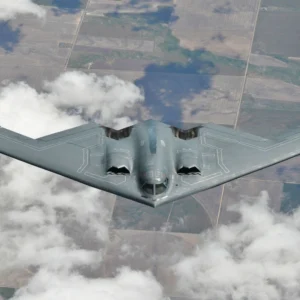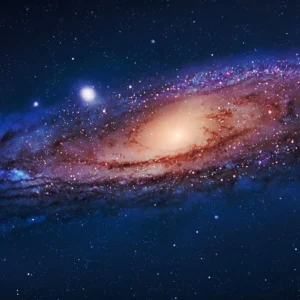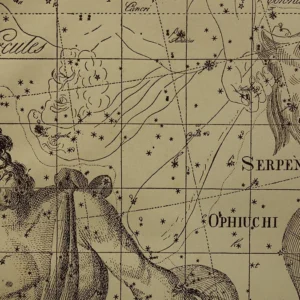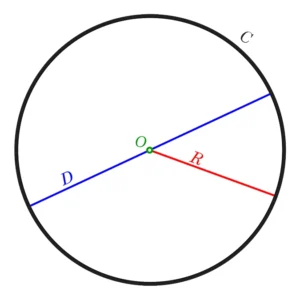The Orion constellation adorns the winter sky of Ukraine and other Northern Hemisphere countries. During the cold season, it appears above the eastern horizon and remains visible throughout the night. The Orion constellation contains many notable stars, each with its own fascinating history.
General Description of the Orion Stars
Located on the celestial equator, Orion is one of the most recognizable star formations in the night sky, visible from anywhere on Earth. Covering an area of 594 square degrees, it is the 26th largest constellation, but it surpasses many in brightness and historical significance.
This constellation is not only impressive in its grandeur but also serves as a guide for amateur and professional astronomers. It is easily identified by three bright stars forming a line known as the “Orion’s Belt.” These Orion stars guide observers to other significant astronomical objects and are often used for celestial navigation.
The Orion constellation (The Hunter) also plays a crucial role in the cultural and mythological context of many civilizations. It is associated with numerous legends and stories. In Greek mythology, Orion was a hunter, associated with Osiris in Ancient Egypt, and called the Faithful Shepherd of Heaven in Babylon.
Video: How to See the Orion Constellation
In this video, you can clearly see the main stars of the Hunter, star clusters, and nebulae.
The study of the constellation remains relevant in modern astronomy as scientists uncover new mysteries of the universe. Its stars and objects are subjects of numerous studies that help us better understand the structure and evolution of the cosmos.
Mythology and History of the Orion Constellation
Since ancient times, the constellation has sparked great interest and admiration in the mythology of various peoples. In Greek mythology, Orion was depicted as a great hunter, the son of the sea god Poseidon and the beautiful Euryale. According to legend, Orion was extraordinarily strong and brave, conquering the most dangerous creatures in the depths of forests and seas. However, his fate was cut short by the tragic events of the god Orea’s jealousy, who couldn’t stand the competition from the famous hunter and killed Orion.

In despair over the loss of his son, Poseidon decided to honor Orion’s grandeur and courage by immortalizing his image in the sky. He raised Orion’s body to the heavens, where it became a constellation that still impresses with its beauty and grandeur.
Bright Orion Stars and Asterisms
In the Orion constellation, which attracts with its mysterious beauty and wealth of astronomical objects, two extremely impressive supergiant stars draw attention with their brightness and scale:
- Betelgeuse. This red supergiant is unique not only in its beauty but also in its impressive size. Compared to our Sun, this star is 14,000 times brighter.
- Rige. Its white-blue color and extraordinary brightness make it one of the most impressive objects in the celestial sphere. Compared to the Sun, it is 68 times larger.
Against the backdrop of the vast cosmos, these two remarkable stars stand as symbols of grandeur and wonder, reminding us of our planet’s humble place in the heavenly realms.
Orion’s Belt is a well-visible star cluster (asterism) consisting of Alnitak, Alnilam, and Mintaka. They are almost in a straight line and have roughly the same brightness.
Conclusion
The Orion constellation is known for its majesty and rich history, continues to amaze and inspire astronomers and stargazers around the world. Its bright stars and cultural significance make it one of the most interesting objects to observe and study. Orion is a true golden plow of the starry sky that has remained in the spotlight for centuries.
FAQ About the Orion Constellation
The main star in the Orion constellation is Betelgeuse.
Orion’s Belt is a line of three bright stars in the constellation.
One of the brightest stars in the Orion constellation, Betelgeuse, is a red supergiant and is predicted by astronomers to possibly explode in the near future. The explosion of Betelgeuse would be a spectacular event, potentially brighter than the Moon and visible even during the day. However, it’s worth noting that “near future” in astronomical terms could mean a very long time, even up to 100,000 years.
The explosion of Betelgeuse should not have a negative impact on Earth since the star is about 700 light-years away. While the explosive wave and debris from the star might reach the Solar System, this would not happen for at least six million years after the explosion. The explosion of Betelgeuse would be an incredible cosmic show but not a threat to our planet.
The best time to observe this cosmic ensemble is in November, December, and January when the constellation is most prominent and accessible for observation. Located in the northern hemisphere’s celestial sphere, Orion is surrounded by other interesting constellations.
Yes, the Orion stars can be easily seen with the naked eye thanks to its bright stars.













